Recent Articles
Popular Makes
Body Types
2020 Chevrolet Colorado Road Test and Review
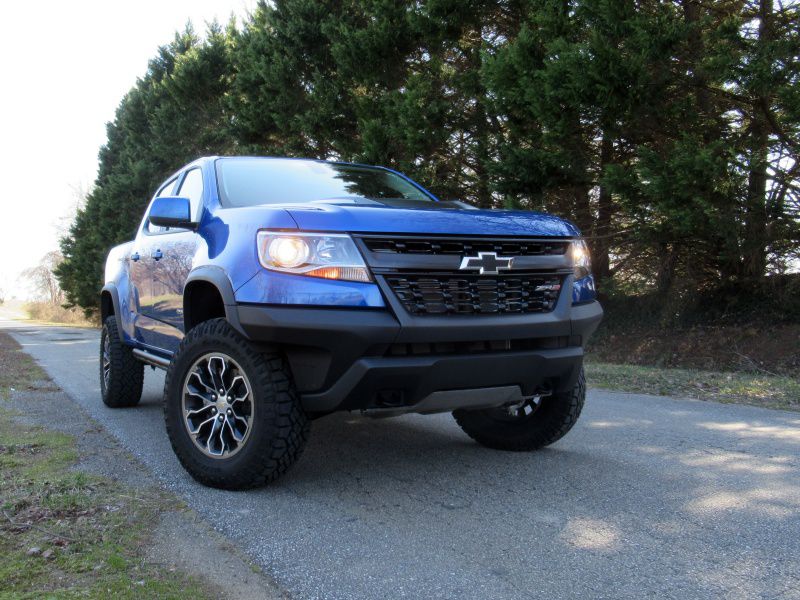
2020 Chevrolet Colorado ZR2 ・ Photo by Brady Holt
Until recently, it seemed that America would only accept full-size pickup trucks. The mid-size Toyota Tacoma stayed steadily popular, but everyone else was accepting slow sales or had exited the market altogether. General Motors was the first to return, reintroducing its Chevrolet Colorado (and the mechanically related GMC Canyon) in 2015. Now the class has heated up further with the all-new Jeep Gladiator and a return of the Ford Ranger, along with a new engine for the soldiering-along Nissan Frontier. The on-road-focused Honda Ridgeline rounds out the class today.
Even with a sea of new or improved competitors to contend against, the 2020 Chevrolet Colorado remains one of our favorite mid-size pickups. Even in its sixth year, it still has no rival that matches its blend of capability and everyday comfort. Let’s go over what we love about the Colorado — and, also, which ways other truckmakers have overtaken it.
Models and Prices
Like most pickups, the Colorado is available in an array of trim levels and body styles. You choose between an four-seat extended cab (featuring a tiny rear-seat area that’s best used for storage) and a five-seat crew cab. Two bed lengths are available: a 62-inch bed that’s standard on the crew cab, and a 74-inch bed that’s optional on the crew cab and is your only choice with the extended cab. You also choose between rear-wheel-drive and four-wheel-drive.
Colorado prices start at $22,395 for a hard-to-find base model and increase to $24,800 for the “Work Truck” edition. Unless you’re outfitting a commercial fleet, you’re probably looking at the better-equipped LT or Z71 editions — the latter adding an off-road suspension, an automatic locking rear differential, and hill-descent control. Figure on spending about $35,000 for a four-wheel-drive LT crew cab, or nearly $40,000 with luxury features like leather upholstery, power seats, and advanced safety technology. We tested the extra-capable ZR2 off-road model, with electronic front and rear locking differentials, extra ground clearance and underbody protection, and more advanced Multimatic shock absorbers. With options, it hit $46,340. Fortunately, discounts are widely available.
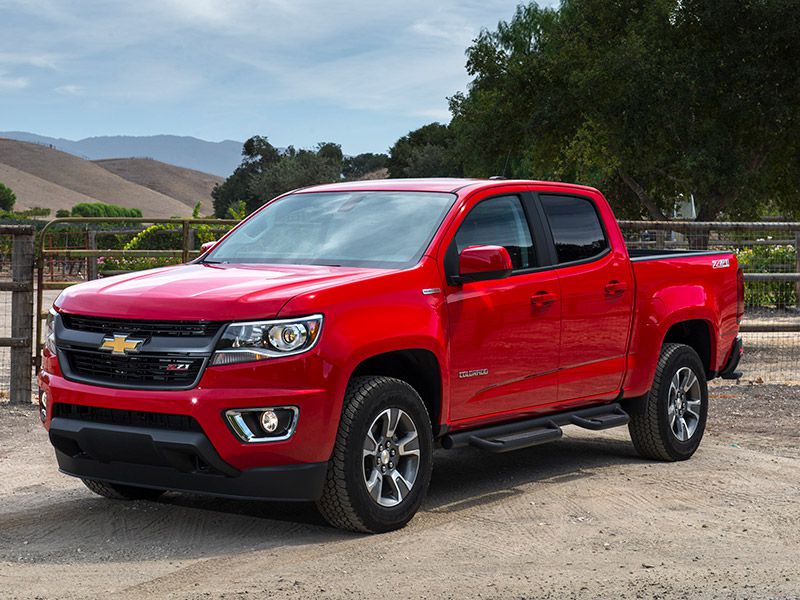
Photo by General Motors
Two Clean Designs
The Chevrolet Colorado is a cleanly designed pickup without the extra-butch styling details that define some trucks. Some buyers might wish for a more assertive look for their pickup, but we appreciate Chevy’s confident restraint. The brand’s standard grille runs between the two headlights, with a horizontal bar in the center that proudly wears the Chevrolet bowtie badge. The fenders are assertively flared without looking over-the-top.
Our tested ZR2 off-road edition has its own front-end design, and we like this one even more. Its reshaped bumper highlights the truck’s protective skid plates, and it curves up from under the truck to meet an enlarged grille. It’s a great mix of style and function, since this new bumper shape leaves fewer low-hanging bumper pieces to catch on a rock, and it’s also not overly aggressive. Regardless of the Colorado design you choose, the truck is also available with a host of appearance packages with distinct style flavors. These include the RST and Redline editions that provide an on-road-performance vibe, the off-road-themed Trail Runner, and the extreme-conditions ZR2 Bison edition.
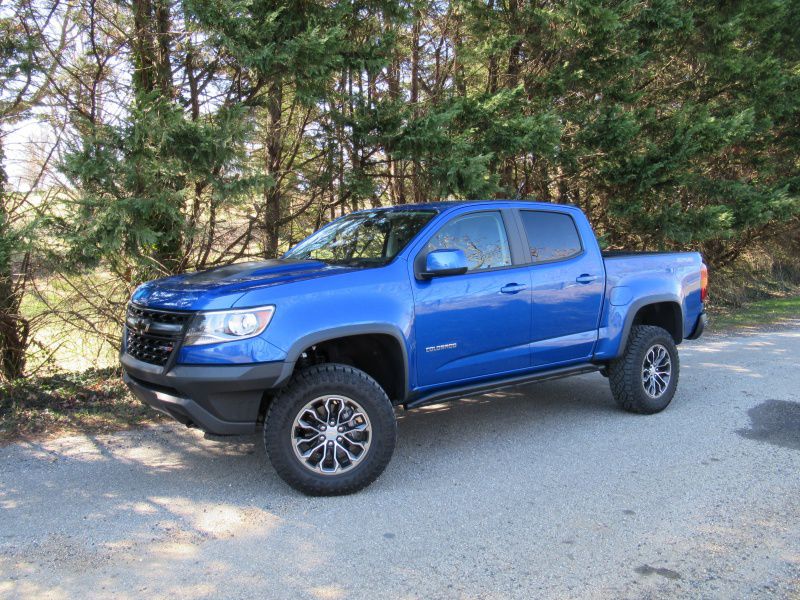
Photo by Brady Holt
Choice of Three Engines
The Colorado is available with a range of three engines. The base motor a 2.5-liter four-cylinder gasoline engine with 200 horsepower and 191 lb-ft of torque — sufficient for a work truck but not what most folks will buy as their family car. More popular is a 3.6-liter gasoline V6 with 308 hp and 275 lb-ft of torque. It delivers smooth, lively acceleration. You can also get a class-exclusive diesel option: a 2.8-liter four-cylinder with 181 hp and 369 lb-ft of torque. The V6 includes an eight-speed automatic transmission while the four-cylinders both use six-speed automatics.
The diesel is more fuel-efficient than the base engine while also being able to out-tow the V6, but the V6 is quicker and less expensive. EPA mixed-driving fuel economy estimates include 23 mpg for the 2WD 2.8-liter diesel, 22 mpg for the 2WD 2.5-liter, and 20 mpg for the 2WD V6, with 4WD costing 1 mpg on each model. Those ratings trail the Ford Ranger’s, whose gasoline engine edges out even the Colorado’s diesel. And ZR2’s higher, less aerodynamic body promises just 19 mpg with the diesel and 17 mpg with the V6.
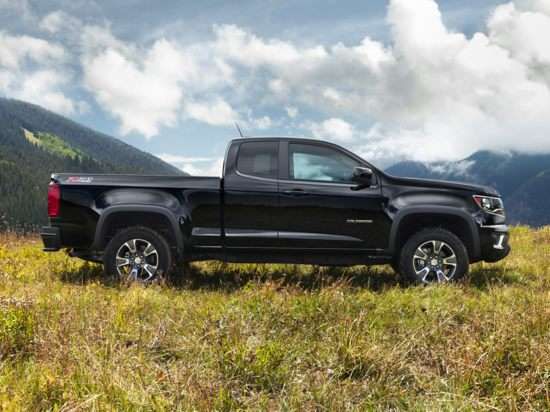
Photo by General Motors
Smooth Ride
The Colorado is one of the gentlest-riding small trucks, even in rock-crawling ZR2 guise. On a 200-mile family trip, the truck proved smooth and quiet on the highway — a master of civility. It’s a big step up from competitors that feel bouncy and unsettled, which can even rock back and forth when you brake gently to a stop. Our test vehicle’s V6 engine exhibited a racy roar when we dug into the throttle, but it won’t announce itself to the whole neighborhood when you’re merely pulling out of your driveway.
We were also impressed with the Colorado’s on-road handling. The steering is more direct and less loose than you’ll find in most mid-size pickups, and the vehicle inspired confidence on a winding road. It’s still a truck, of course, which means you must drive it with respect for physics. But this isn’t a vehicle that constantly telegraphs its heavy-duty capabilities. You can load it up or take it to the trails, but you can also drive it comfortably to work.
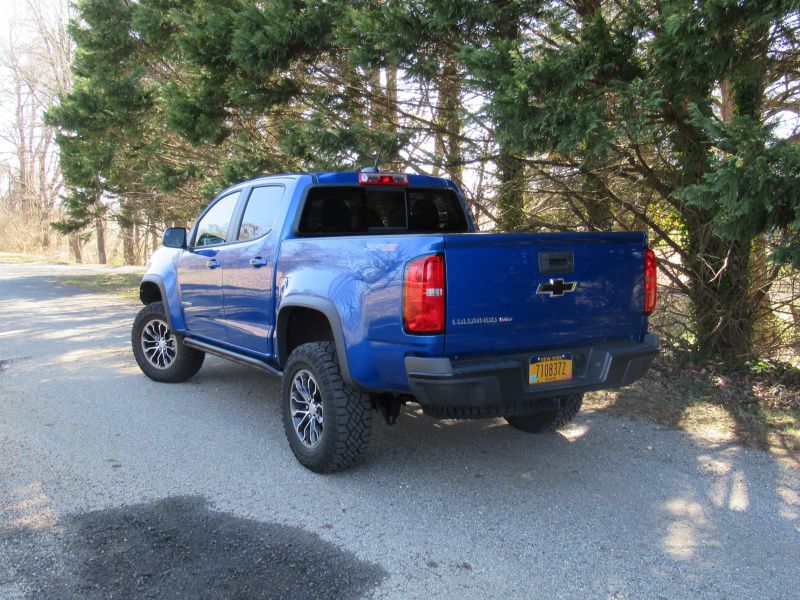
Photo by Brady Holt
Spacious Interior
A usefully spacious interior is another Colorado strong point. There’s plenty of legroom and headroom in the front, and it’s easy to get comfortable behind the wheel. That’s a big advantage over the ergonomically compromised Toyota Tacoma, even after some recent improvements to that truck. The Colorado also has an adult-friendly rear seat in its crew-cab configuration, though folks seeking limo-like space will need a full-size pickup or the car-based Honda Ridgeline. Like in other pickups, the Colorado crew cab lets you flip up the rear seat cushion to use the rear area as cargo space, though its bulky supports remain on the floor when you do so. As with the competition, the extended-cab model has tiny rear seats that are best used as storage spaces.
For extra hauling, the Colorado can tow a hearty 7,000 pounds with its V6 engine when properly equipped, and a mighty 7,700 pounds with its diesel. The base four-cylinder maxes out at 3,500 pounds of towing. Maximum payload capacity reaches nearly 1,600 pounds. Like with other trucks, towing and payload specs vary by engine, body style, trim level, and drive wheels.
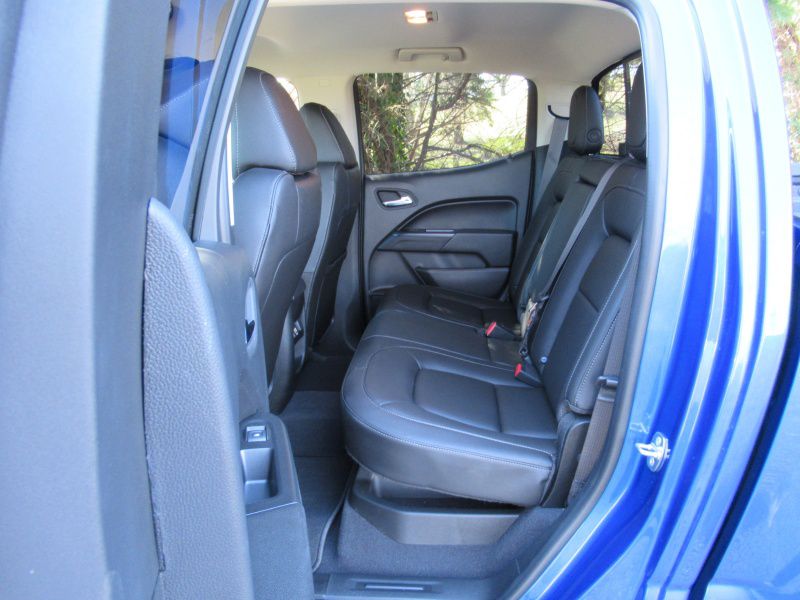
Photo by Brady Holt
User-Friendly Infotainment
The 2020 Chevrolet Colorado never pretends to be a luxury vehicle inside, but it features a well-assembled cabin, user-friendly controls, and up-to-date infotainment. Every Colorado includes a usefully large touchscreen on the dashboard (7 inches on base models with an available upgrade to the 8-inch screen, like on our test vehicle), and it’s compatible with Android Auto and Apple CarPlay smartphone integration. The interior design is simple and timeless — without the rugged cues that make a Toyota Tacoma or Jeep Gladiator seem more fun and special, but also without anything that seems busy or contrived.
The Colorado is missing some features, though. You can’t get it with a sunroof, a particular downside in a class that now includes the Gladiator convertible. There’s no proximity key with push-button starting, even on upper-trim models. And advanced driver-assistance features are either hard-to-find options or not offered at all — we’ll get to that more in a moment.
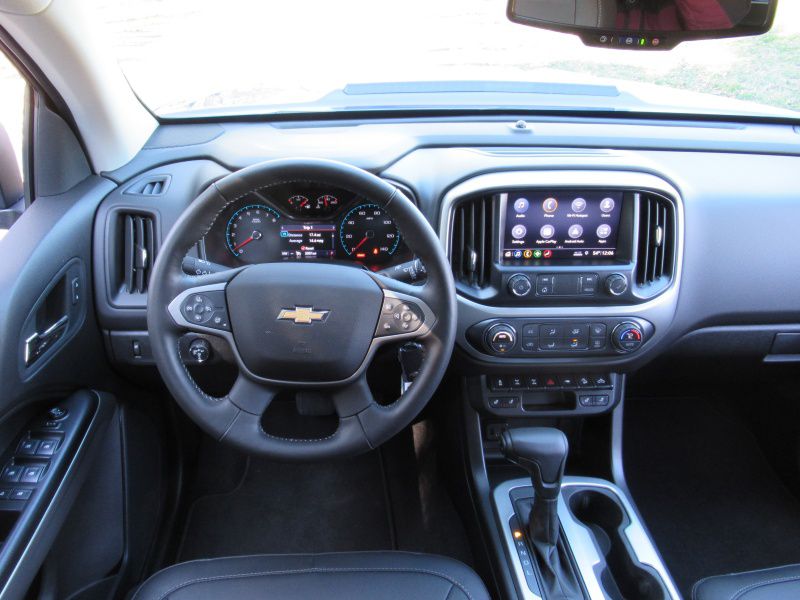
Photo by Brady Holt
Safety Shows Its Age
Technology like automatic emergency braking, lane-keeping steering assistance, blind-spot monitoring, and a rear cross-traffic alert used to be limited to luxury cars. Now they’re standard equipment or at least widely available on many affordable vehicles, including several Colorado competitors: the Ford Ranger, Toyota Tacoma, and Honda Ridgeline. None of them is even optional on the Colorado. You can get a forward-collision warning and a lane-departure warning as optional equipment on some trim levels, and a backup camera is standard (per federal requirements), but most competitors go much further.
The Colorado’s crash-test scores also trail the Ranger, Tacoma, and Ridgeline, though primarily on one tough evaluation: the IIHS’s small-overlap passenger-side frontal-impact test, where they scored Acceptable (the second-highest grade of four) while the Colorado was Marginal (the third-highest). We wouldn’t choose our truck based on this one data point, but the Colorado’s overall safety record does trail its newer competitors.
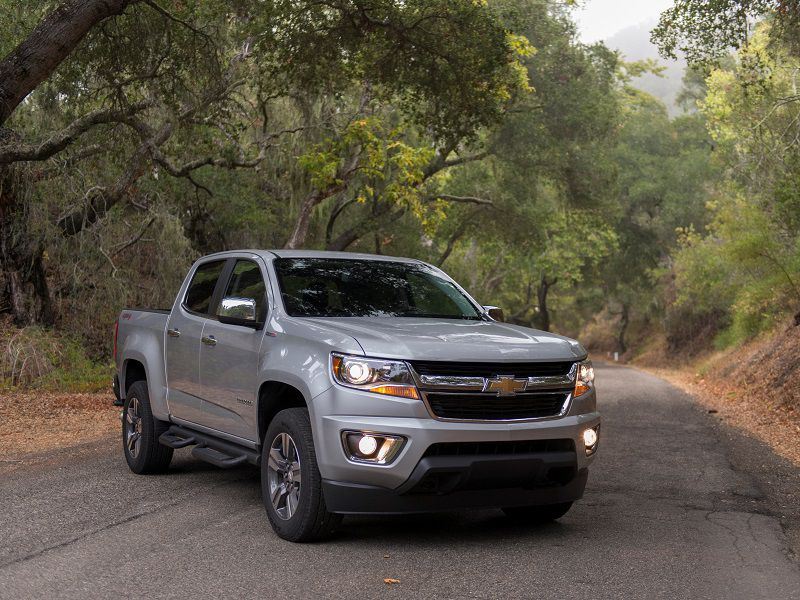
Photo by Chevrolet
Competitors to Consider
In the mid-size pickup class, there’s no perfect option. The Colorado slips behind the pack for gas mileage, available features, and stylistic exuberance, but every competitor also has at least one key drawback.
The best-selling Tacoma comes with generous safety gear, a cool rough-and-tumble vibe, and a top reliability reputation. But it has a cramped rear seat for adults and even limited front-seat headroom; middling acceleration and hauling capability; and a bouncy ride with clumsy handling. The new Ford Ranger has a terrific turbocharged four-cylinder engine that’s powerful, capable, and fuel-efficient, but it’s arguably drab-looking and inarguably less smooth on the road than the Colorado. The Jeep Gladiator offers unique retro styling and a convertible roof, but it gets expensive in a hurry and doesn’t top the class for utility. The ancient Nissan Frontier is an all-business truck with a cramped and dated interior but great prices. The minivan-based Honda Ridgeline is wonderfully smooth and spacious, but it doesn’t have much character and can’t haul or rock-climb with the class’s best. Lastly, the GMC Canyon is a mechanical twin to the Colorado with blockier styling.
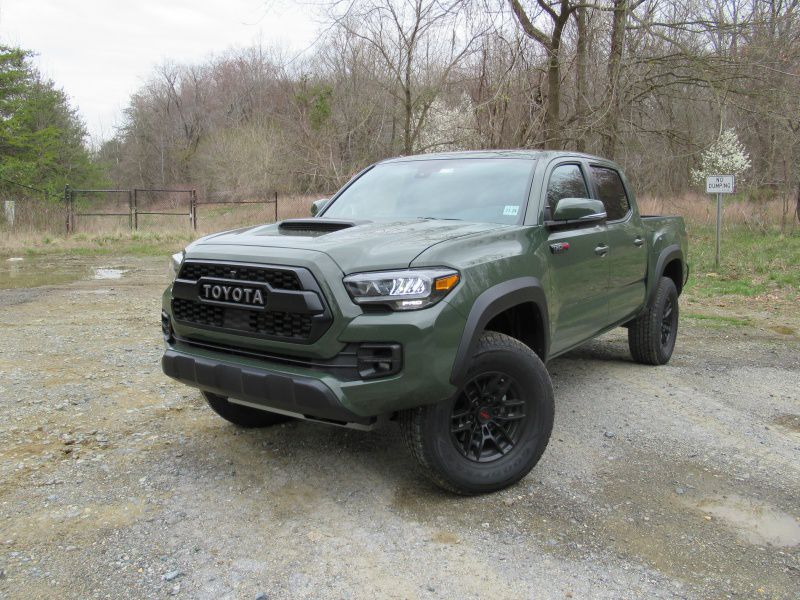
Photo by Brady Holt
Capable Yet Civilized
The agreeable Chevrolet Colorado has something for everyone. It’s capable at both work and play, yet comfortable and quiet enough to be an everyday family car.
We’ve highlighted the ways the Colorado has fallen behind, though, too. With few mid-size trucks to choose from compared to, say, mid-size sedans, it should be doable for you to carefully consider a big chunk of the class. While each one has drawbacks, one of them will fit you best. And the well-rounded Colorado is a leading candidate for your driveway.
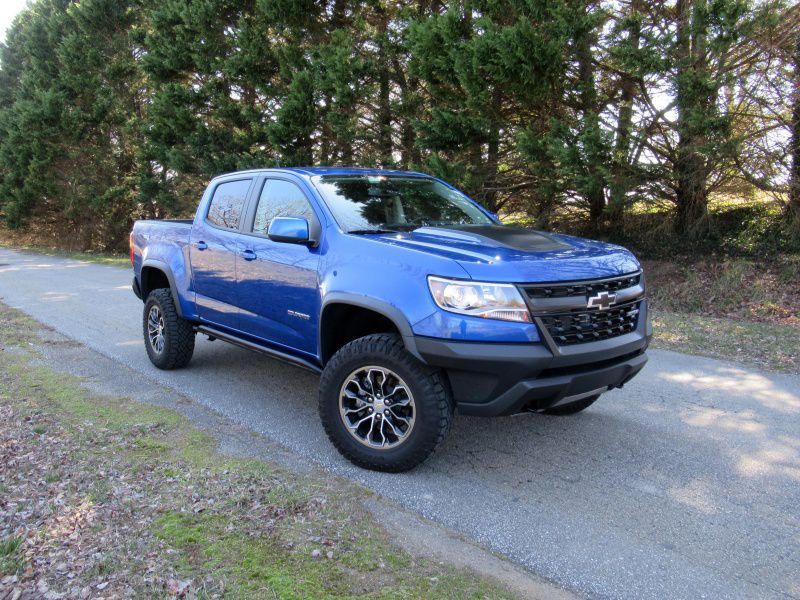
Photo by Brady Holt